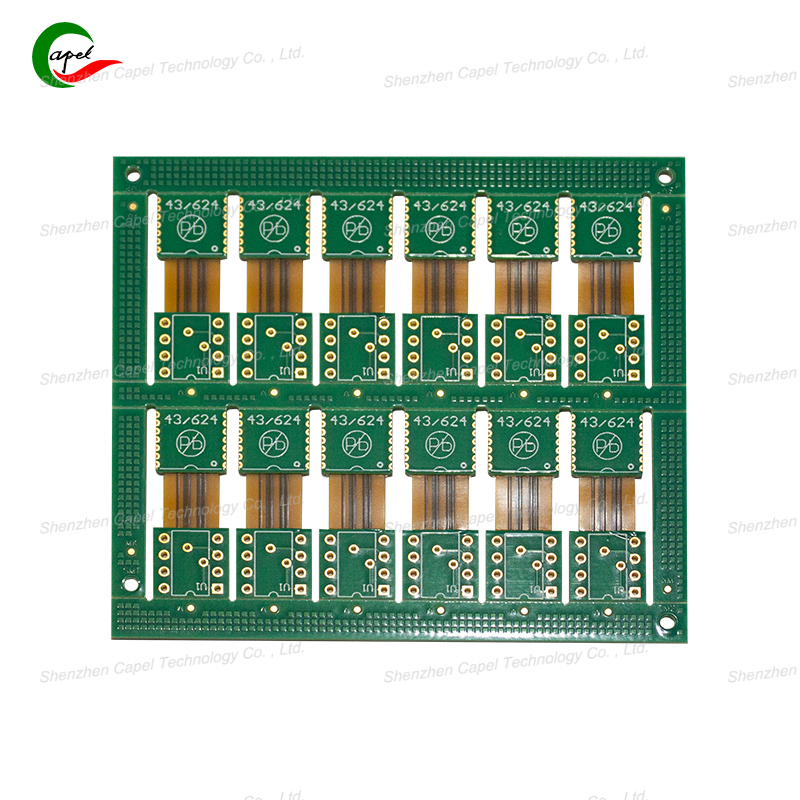What Are the Rules for Drilling Rigid PCBs? What Happens If You Drill Crookedly?
Date: 2025-09-30
Drilling holes in rigid PCBs might seem simple—just make a hole where you need one—but it’s actually one of the most precise steps in PCB manufacturing. Those tiny holes (some thinner than a hair) connect layers, hold components, or let screws attach the PCB to a device. Messing up the drill job can ruin the whole board. Let’s break down the key rules for drilling, and what happens if you get it wrong—no confusing jargon, just straight talk.
Factories don’t just grab a drill and start boring—they follow strict rules to make sure holes are accurate and useful. Here are the four most important ones:
Not all holes are the same—their size depends on what they’re for:
-
Small holes (0.1mm–0.3mm): Used to connect layers of the PCB (called “vias”). These need to be tiny to avoid wasting space on the board.
-
Medium holes (0.4mm–1mm): For component leads (the tiny metal pins on chips or resistors). If the hole is too small, the pin won’t fit; too big, the component will wiggle and might fall off.
-
Large holes (1mm+): For screws or big components (like capacitors). These need to be precise—if the hole is too small, the screw won’t thread; too big, the PCB will shift when you tighten the screw.
-
Example: A smartphone’s PCB uses 0.2mm via holes to connect its 4 layers, and 0.6mm holes for resistor leads. If the via holes were 0.1mm too small, the layers wouldn’t connect, and the phone wouldn’t work.
Rigid PCBs have hundreds of holes, and each one needs to be in the exact right spot—usually within 0.05mm of the design (that’s 1/20th the width of a human hair). Here’s why:
-
Components are placed using machines that line up with the holes. If a hole is off by even 0.1mm, the component’s pin won’t line up, and the machine can’t attach it.
-
Layers rely on aligned holes to connect. If a via hole is misaligned, the top layer won’t connect to the bottom layer, breaking the circuit.
-
How factories do it: They use “CNC drilling machines” with cameras that scan the PCB for tiny alignment marks. The machine adjusts the drill bit to hit the exact spot every time.
Using the wrong drill bit is a disaster for rigid PCBs. Here’s what matters:

Drilling too fast or too hard can damage the PCB:
-
Speed: Drilling FR-4 too fast (over 30,000 RPM) generates too much heat, which melts the resin in the PCB and clogs the hole. Too slow (under 10,000 RPM) leaves rough edges.
-
Pressure: Too much pressure bends the drill bit (leading to crooked holes) or cracks the PCB. Factories use sensors to control pressure—just enough to cut through, but not enough to damage the board.
A crooked hole (even slightly) isn’t just a “small mistake”—it can make the PCB useless. Here are the three main problems:
If a hole for a component pin is crooked:
-
The pin might not slide into the hole at all—so the component can’t be soldered to the board.
-
If the pin does fit, it will be tilted. When you solder it, the solder won’t cover the pin evenly, and the component will fall off when the device is used (like a resistor falling off a TV’s PCB, causing the screen to flicker).
-
Example: A crooked hole for a CPU socket pin on a gaming motherboard means the CPU can’t sit flat. The CPU will overheat because it’s not making good contact with the cooler.
Vias (holes that connect PCB layers) rely on being straight to link top and bottom layers. A crooked via:
-
Might only connect one layer instead of all—so power or signals can’t flow through the board. For example, a crooked via on a car’s PCB might stop the brake sensor from sending a signal to the dashboard, leading to a safety risk.
-
Could create a “short circuit” if the hole drifts into a nearby copper line. The via might accidentally connect two separate circuits, causing the board to fry when power is turned on.
Drilling crookedly often means the drill bit was pushed too hard or tilted. This puts stress on the PCB:
-
Small cracks can form around the hole. These cracks might not be visible at first, but they’ll spread when the PCB heats up (like in a laptop) or vibrates (like in a car). Eventually, the PCB will split, and the device will stop working.
-
If the drill bit goes all the way through the PCB at an angle, it might scratch the copper lines on the other side—breaking more circuits in the process.
Good news: Factories almost never let crooked holes make it to finished PCBs. Here’s how they prevent or catch the problem:
-
Prevent: CNC drilling machines with camera alignment and pressure sensors stop crooked holes before they happen. Operators also test drill bits on “sample PCBs” before drilling production boards.
-
Catch: After drilling, factories use “AOI (Automated Optical Inspection)” machines to scan every hole. These machines check for size, position, and straightness—any hole that’s off gets flagged, and the PCB is discarded or fixed (if possible).
-
Fix (rarely): For small batches (like DIY PCBs), some people use a “reamer” (a tiny tool) to straighten slightly crooked holes. But for mass-produced PCBs, it’s cheaper to discard bad boards than to fix them.
Rigid PCBs live or die by their holes—size, position, and straightness all matter. The rules for drilling aren’t just “red tape”—they’re there to make sure the PCB works as it should. Whether it’s a smartphone, a car, or a gaming PC, the tiny holes in its rigid PCB are just as important as the big components they hold.
releted link:
